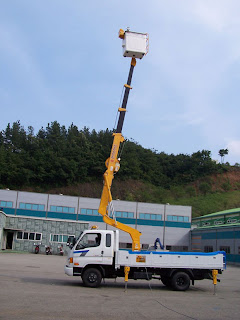 Jan 1, 2010 12:00 PM
Jan 1, 2010 12:00 PMBy Dwayne Neustaeter, Arboriculture Canada Training & Education Ltd.
Aerial lifts can increase field crews' safety and productivity when working aboveground. However, they also can put an inexperienced operator into an environment that could test their knowledge and/or competence level beyond their capacity.
Some linemen may not know what to do if they are stranded in an aerial lift that quits working when they are in the air. Here are five points to improve the safe use of aerial lift units in the field.
Develop and document current policies and procedures for aerial lift hydraulic malfunction
Corporate regulations governing some aspects of working aloft are often vague; therefore, organizations often develop work practices and safety guidelines based on the way line workers did it in the past. Statistics show that this is flirting with disaster.
Ensure that aerial lift units are inspected and maintained regularly
Routine inspection and maintenance goes a long way toward keeping equipment running properly. When operators find themselves stranded or stuck when working aloft, it's often due to an avoidable equipment malfunction such as running out of gas.
Make sure your aerial lift unit has an electric hydraulic override that is functional
Linemen should not only regularly check to make sure the electric overrides are working, but they must also ensure all operators know how to use the override. Most new and modern aerial lifts manufactured today come with an electric hydraulic override, which solves the biggest cause of hydraulic failure.
 Be prepared by outfitting your aerial lift with a self-rescue kit or evacuation kit
Be prepared by outfitting your aerial lift with a self-rescue kit or evacuation kitMany professional operators believe these kits are as important to emergency preparedness as a well-stocked first aid kit.
Self-rescue is an area of emergency response that is in a lower-risk category compared to other aspects of emergency response. Aerial lift operators, however, can be fearful about being stuck alone in an aerial lift with no control over their descent to the ground.
However, the good news is that there are very simple solutions to this problem. Training, education and the equipment or kits necessary to make self-rescue a part of a company's safety culture are available through many manufacturers and organizations.
Provide quality training in the operation of your aerial lift units and the rescue of operators
Safe, productive aerial lift operations require the operators to have a thorough knowledge of operational capabilities, limitations, restrictions and safety features.
In addition, operators should seek guidance when installing and setting up a self-rescue protocol. Aerial lift units are different from each other. In addition, the control tower and anchor point locations are often not all set up in the same way.
For that reason, it is important to be able to think and adjust to surroundings and circumstances.
Line workers who have been educated, trained and qualified to deal with the specifics of their job are safer and more productive. A training firm or organization that provides training for a utility's lift operators can streamline the process. In addition, this kind of company also can provide documentation that easily integrates into a utility's safety policy and procedures manual and due diligence compliance documentation.
Emergency preparedness on the job means being prepared to deal with emergencies to the best of everyone's ability. Training, preparation and planning are all necessary in order to be ready to handle a self-rescue scenario from an aerial lift unit.
No comments:
Post a Comment